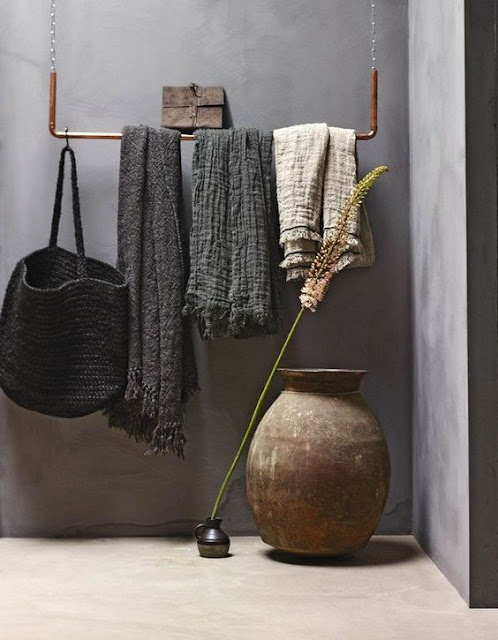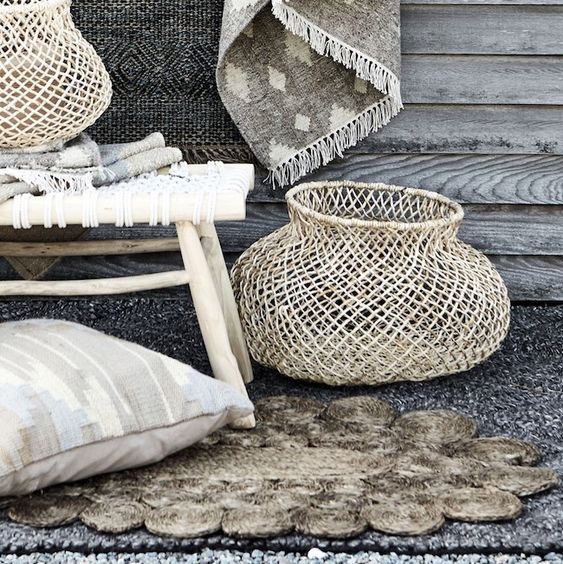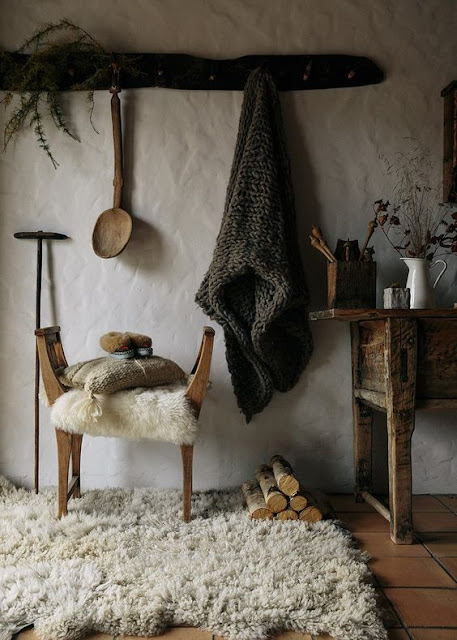Photo Via
Lately, I have been pondering over the wabi-sabi philosophy a lot. Maybe it was triggered by my winter cleaning and refusing to throw objects I have from my grandparents, and although some rusty and some of them chipped, I wished to hold onto them a little bit more, just to have them there to look at and admire.
In traditional Japanese aesthetics, wabi-sabi is centered on the acceptance of transience and imperfection. The aesthetic is sometimes described as one of appreciating beauty that is "imperfect, impermanent, and incomplete" in nature.
The word 'wabi' originally referred to the loneliness of living in nature, remote from society; 'sabi'
meant "chill", "lean" or "withered". Around the 14th century, these
meanings began to change, taking on more positive connotations. 'Wabi'
came to connote rustic simplicity, freshness or quietness, and can be
applied to both natural and human-made objects as an expression of
understated elegance. It can also be used to refer to the quirks and
anomalies that arise from the process of making something, which are
seen to add uniqueness and elegance to the finished object. 'Sabi' refers to the beauty or serenity that comes with age, when the life of the object and its impermanence are evidenced in its patina and wear, or in any visible repairs.
After centuries of incorporating artistic and Buddhist influences from China, wabi-sabi eventually evolved into a distinctly Japanese ideal. Over time, their meaning
changed to be more lighthearted and hopeful. Around 700 years ago,
particularly among the Japanese nobility, understanding emptiness and
imperfection was honored as tantamount to the first step to satori, or enlightenment.
In today's Japan, the meaning of wabi-sabi is often condensed to "wisdom in natural simplicity". In art books, it is typically defined as "flawed beauty".
I plan to make a small photo-session with my precious objects and I am already excited about it!

Photo Via

These wondrous hooks are by Sarah from Keble Craft Collective.
Photography by Sam Macki.

Photo Via



5 comments:
I totally agree, Maya, there is perfection in imperfection. How wonderful you have treasured heirlooms like that. Sharing this post in the Hearth and Soul Community Facebook group today. Thank you for being a part of Hearth and Soul.
Your post speaks to my heart, Maya. My word for the year is "simplicity" and I'm all about embracing the imperfections (in objects and people) and I adore things with a time-worn patina. I didn't realize those things I love had a name. Thanks for enlightening me!
Thank you April! I am happy to be a part of your group! Hugs!
Thank you, Marie! I believe the pandemic contributed greatly to the overall awakening of people in the sense of the important values in life, and how much we can do without a lot of stuff and how much simplicity can enrich lives (regardless of how oximoronic this might sound). Cradling an old soul, I am always attracted to vintage /old objects.
I just came across your blog on Pinterest... I love everything about the term and philosophy Wabi-sabi. Perfection is stifling and overrated... I love the innocence and beauty and simplicity of imperfection.
Post a Comment